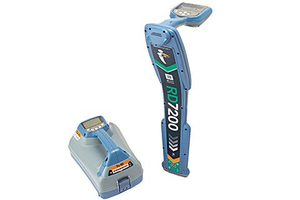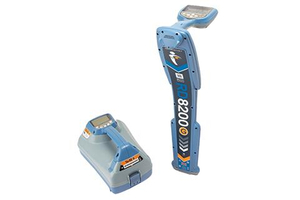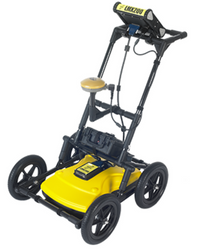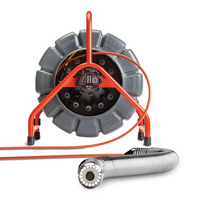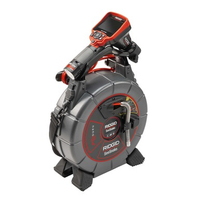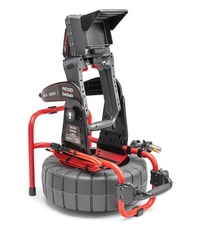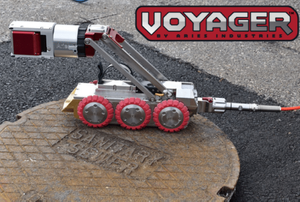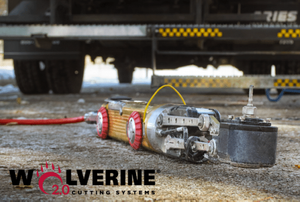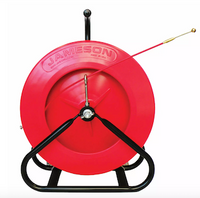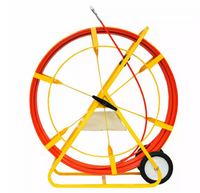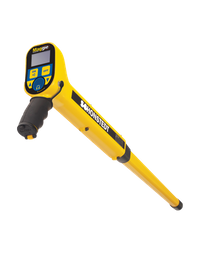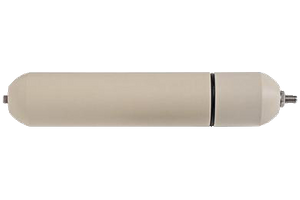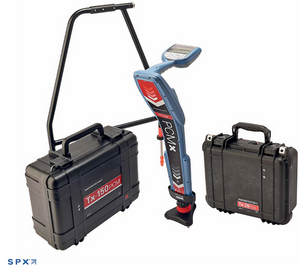At C&S Solutions, we offer a wide variety of products, but also, we offer free, on site training for the lifetime of equipment, free 24/7 support, loaners, warranty, and the most professional, certified technicians in the business! We service what we sell! Whether you are looking for line locators, mainline sewer inspection systems, ground penetrating radar, sewer cameras, locatable rods, magnetic locators, locator sondes, pipeline assessment equipment or fault locators, we have what you need and more!

Play It Safe, Locate it- Before You Dig
It is extremely important to have an understanding of what temporary markings colors mean for underground utility lines. Everyone has witnessed markings along the road, in their yard, at a jobsite, etc. But that does not mean that you knew the meaning of each color. See the chart for a better understanding and contact us for all of your locating needs!
Utility Line Locating Equipment Overviews
Line Locators
Handheld line locators are one of the most convenient ways to locate underground lines and pipes with pinpoint accuracy. These small tools can save you the big hassle and expense of a line strike while offering an easy way to locate and map buried utilities. They work similarly to metal detectors - by sending out signals that detect metal objects underground and setting off a signal when you’ve reached the line’s location. Features like depth estimation and audio signals to let you know when you’re close to a line make handheld line locators essential to have in your toolbox. Click here to see all of our line locators.
Fault Locators
When it comes to electricity and communications infrastructure, there are two types of faults: ground faults and cable faults. Cable faults occur when the cable can’t perform as it’s supposed to for reasons that include frayed insulation, unsatisfactory installation, and short circuits. Ground faults, on the other hand, happen when electricity is routed to the ground instead of through the proper circuit. Though faults can cause service interruptions or even severe electrical shock, fault locators help to locate and identify faults before they cause damage. View our full lineup here.
Ground Penetrating Radar
Ground penetrating radar systems send radio waves through the ground, which then bounce off of subsurface infrastructure and deliver accurate data on where and what that infrastructure is. They’re able to detect both metal and non-metal objects, allowing you to create a more detailed map of what’s waiting underground and reduce the possibility of damage to existing infrastructure. GPR systems are usually about the size of a lawnmower and most have an LCD screen for live viewing. View our full selection of GPR systems here.
Sewer Cameras
Sewer cameras are typically affixed to the end of a long cable, which is then snaked through a sewer pipe while transmitting live video back to the crew. The cables are specially designed to be able to navigate turns within the pipes, even sharp ones, and most are able to provide clear visuals even in the low light of a sewer pipe. A sewer camera is yet another essential tool to have, as it allows you to find obstructions, leaks, and other damage in pipes that are too small to send a robotic sewer inspection system into. View all sewer cameras here.
Mainline Sewer Inspection Systems
Mainline sewer inspection requires tough equipment, namely robotic systems built for the job. Top-quality sewer cameras are mounted on small, agile systems and sent into the main lines to relay information back to the people manning them. Some are controlled via joystick, while others are self-propelled. On the other hand, vehicle-mounted pipeline inspection systems come with everything you need to safely and accurately inspect main lines, all put together in a state-of-the-art truck, van or trailer with its own control room. Looking for more information, view all mainline sewer inspection systems.
Locatable Rods
Locatable rods make tracing underground conduit or pipe easier on you and your team. Not only are they simple to thread through a pipe and flexible enough to navigate bends, the copper within the fiberglass can be detected by locators at depths up to 10 feet. Using a traceable rodder is by far the easiest way to locate PVC gas services - no tracer wire required. Read more about locatable rods here.
Magnetic Locators
Magnetic locators are used to find ferrous materials like iron or steel. They’re especially helpful when you’re working around a body of water or a layer of snow which may block signals from electronic line locators. Rather than emitting an electronic signal which bounces off underground objects, magnetic locators detect the disturbance in the magnetic field that surrounds ferrous objects. Using a magnetic locator, you can find objects ranging from a stray nail to a large underground storage tank. View our full line here.
Locator Sondes
Locator sondes are some of the best tools for locating and tracing non-metallic underground lines. A small, self-contained transmitter is attached to the end of a Flexrod, which is then threaded through the pipe. The sonde emits a signal that can be picked up with a sonde locator. Crews can use sondes to trace and map underground lines or to find obstructions - simply thread the Flexrod with the sonde as far as you can until it hits something, then locate where it stopped. This is a great way to find damage, debris, and collapses along a pipeline. See more details.
Pipeline Assessment Equipment
Preventative maintenance is key for any utility line, and pipeline assessment tools help you spot potential issues in a pipeline before they become major problems. Tools like the PCMx™ Pipeline Current Mapper System by Radiodetection can measure the quality of the coating on the pipeline in question, allowing you to spot corrosion or weakened areas and repair them before the damage starts to impact customers. View more here.

